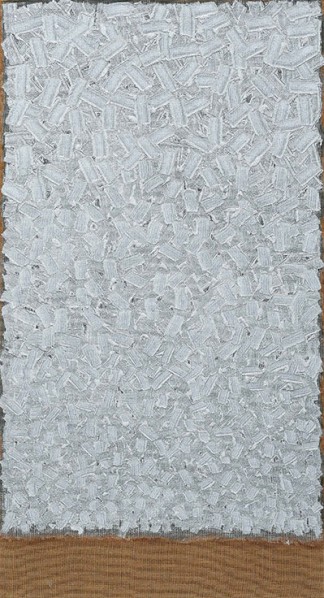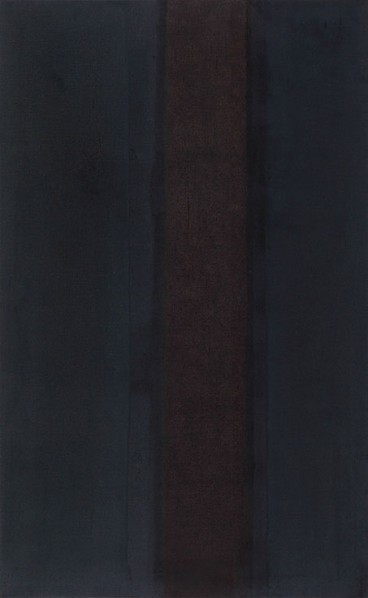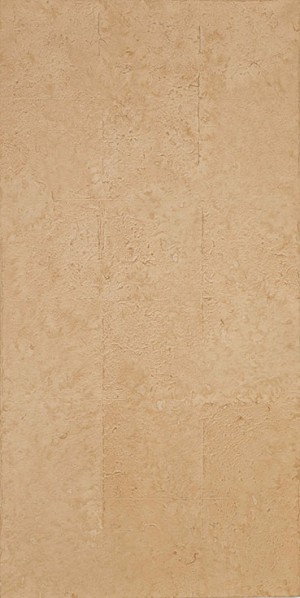
Ha Chong-Hyun, Conjunction No. 97-035. Oil on hemp cloth. 86 58 x 47 14 in. (220 x 120 cm.)
Kim Whan-Ki and Rhee Seundja are pioneers in the history of Korean abstract art, among the first to appropriate the pure abstraction pioneered by artists in the US and Europe, adapting it to represent nature through organic motifs, geometrical forms, repetitive brushstrokes and careful layering of paint. Lee Ufan, Park Seo-Bo, Chung Sang-Hwa, Yun Hyong-Keun, Chung Chang-Sup and Ha Chong-Hyun are the leading artists from Korean monochrome art movement, Dansaekhwa, which dominated the art scene of Korea throughout the 1970s. Dansaekhwa is one of the most important artistic movements in the history of modern and contemporary art in Asia along with Gutai in Japan.

Yun Hyong Keun, Umber-Blue, 1979-1987. Oil on linen. 51 38 x 31 12 in. (130.5 x 80 cm.)

Chung Sang Hwa, Untitled (10-15), 2005.

Chung Chang-Sup (1927-2011), Meditation No.93102, 1993. Best fiber on cotton. 88 14 x 48 in. (244 x 122 cm.)
Translating as ‘monochrome’, the Dansaekhwa movement was created in post-war Korea by artists wishing to reject the conservative and corrupt National Exhibition. Their style was simple and austere, inspired by traditional Asian ink painting and the beauty of nature. In recent years, figures from the Dansaekhwa movement and Korean abstract art have been at the forefront of the Asian modern and contemporary art market. This is in part thanks to a comprehensive book about the movement, Dansaekhwa (The Greenfell Press), being published in English for the first time as well as a growing interest among museum curators and scholars in reviving art movements that have been overlooked by history.
About the exhibition
Date: 6 November – 4 December, 10am – 5:30pm
Venue: The James Christie Room, 22nd Floor, Alexandra House, 18 Chater Road Central, Hong Kong
Courtesy of the artists and Christie's Hong Kong Galleries.




























